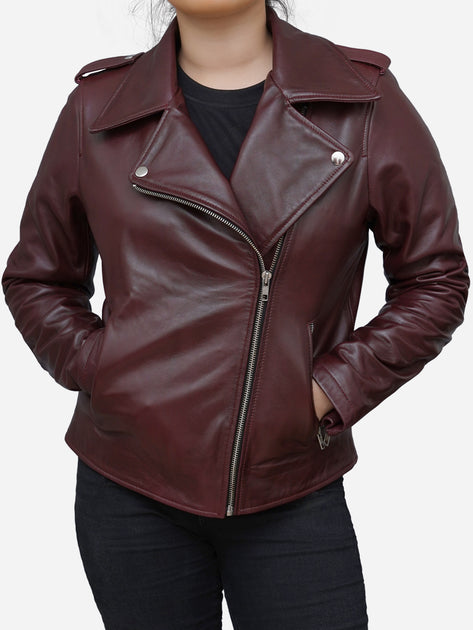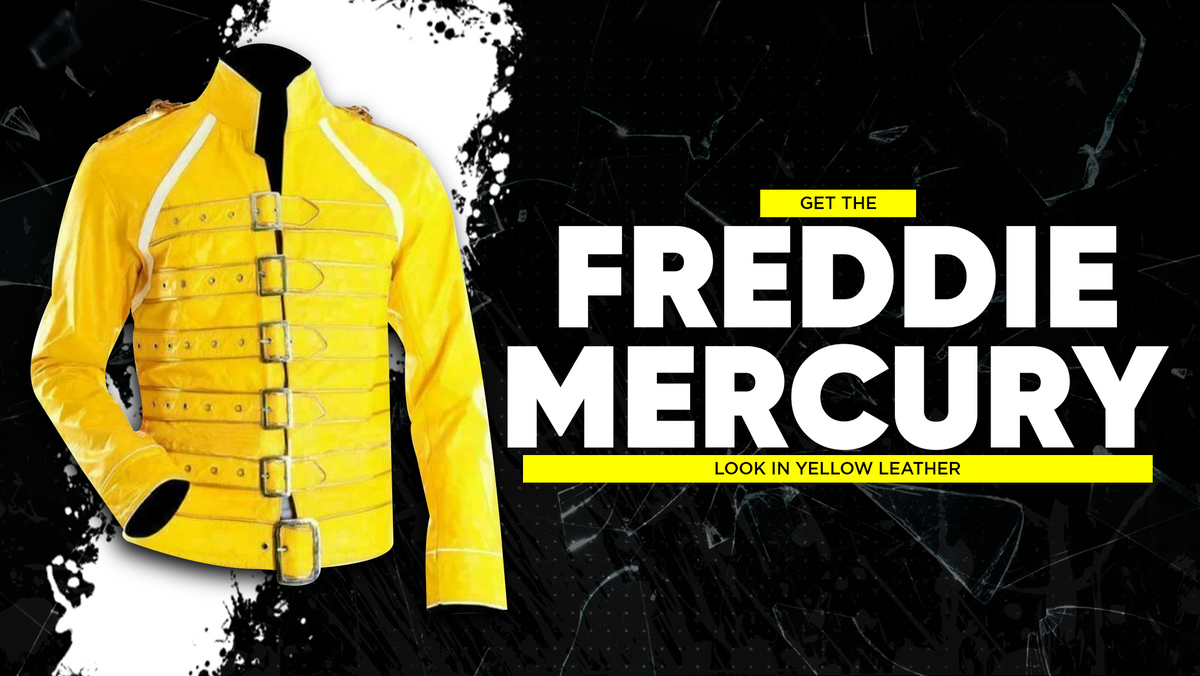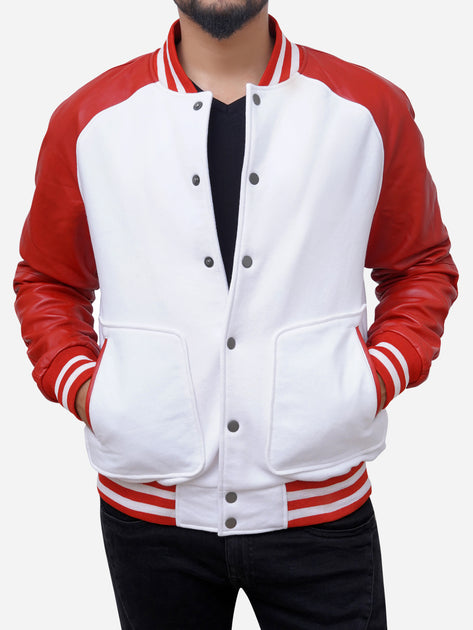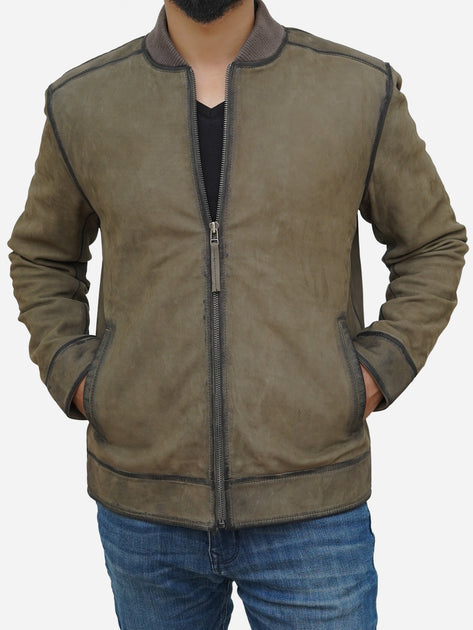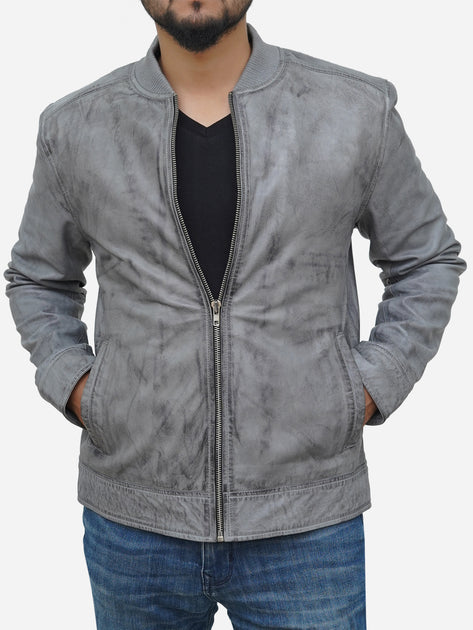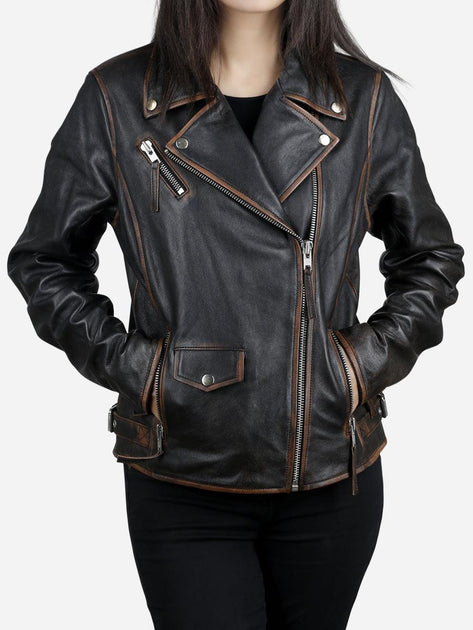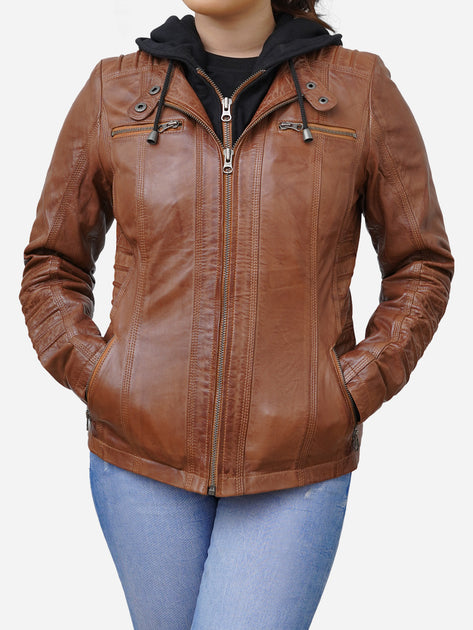Real VS Faux Leather Jacket
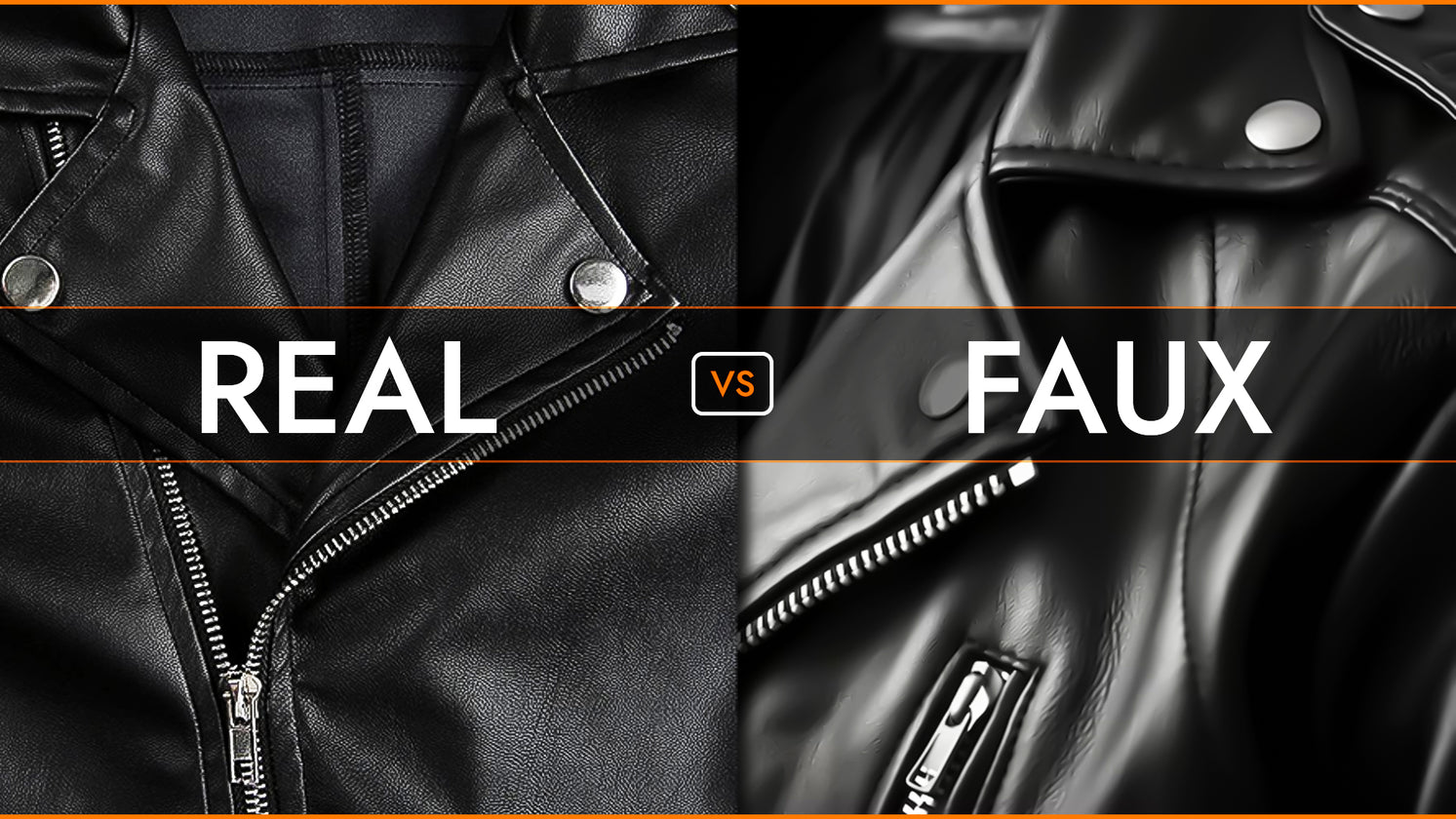
Leather, a material that has stood the test of time, has been used to create everything from furniture to fashionable jackets. However, with the surge of faux leather in the market, it's become increasingly challenging for consumers to identify the real thing. Our main question is faux leather real leather? By learning to recognize the signs of a genuine leather jacket, you can ensure you're not being sold a Faux. This knowledge empowers you to make an informed decision when purchasing a leather jacket, putting you in control of your investment.
|
JACKET MADE FROM REAL LEATHER |
JACKET MADE FROM FAUX LEATHER |
|
Material: Derived from genuine animal hide |
Material: Made from artificial plastic or polyurethane |
|
Durability: Long-lasting and robust when correctly cared for |
Durability: Less durable and may display wear over time |
|
Texture: Exhibits a natural grain pattern and unique texture |
Texture: Uniform texture with no natural variations |
|
Breathability: More breathable compared to synthetic materials |
Breathability: Less breathable than real leather |
|
Price: More costly than Faux leather |
Price: Less expensive than real leather |
|
Sustainability: Can be environmentally friendly if produced |
Sustainability: It may not be ecologically friendly if made from synthetic materials |
The Price Factor

However, our main question is what is the difference between faux leather and leather? The main differentiator between genuine and artificial leather is frequently the cost. A genuine leather jacket costs around twice as much as a synthetic one. If you encounter a leather jacket sold at a significantly discounted price, it is probably made of synthetic leather. Several tests can be conducted to ascertain whether the coat is genuine or faux leather.
Touching The Leather Says It All

Good-quality genuine leather always feels slightly smooth and warm when touched. It is likely faux leather if the material feels unnaturally smooth and gives off a plastic-like texture. To accurately compare both types, it's best to visit reputable garment stores that carry a variety of genuine and synthetic leather. This way, you can quickly examine and compare original leather vs Faux. Also, the characteristics of each material to make an informed decision.
Keep Your Eye On The Texture Pattern

Faux leather undergoes chemicals and procedures before it enters its proper place. At the same time, natural leather has a unique and sophisticated texture that feels amazing and can be identified by looking at it.
Genuine leather would look distressed, and large grains would be present because it is obtained naturally. We’ll advise you to check the pattern on the jacket correctly before buying it. Trust me, you’ll thank us later.
Always Check The Smell

The scent of leather can be a helpful clue in distinguishing genuine leather from its artificial counterpart. Artificial leather often emits a chemical or plastic-like odor, while genuine leather exudes a natural, organic smell. Many individuals are drawn to jackets crafted from authentic leather due to the appealing aroma, which some describe as addictive. Once experienced, the distinct scent of genuine leather can easily distinguish the difference between faux and real leather remembered for a lifetime, adding to its allure and appeal.
Does It Absorbs Water?

Due to its pores, natural leather has a unique ability to absorb water. When water is applied to genuine leather, dark patches will be visible where moisture is present until the water evaporates. Simply test if the leather is genuine by putting 1-2 drops of water on its surface. If the leather absorbs the water, it is authentic. However, if water droplets remain on the surface, it is not.
It can be challenging to test a new leather jacket in the store, but you can ask the store assistants for a spare piece of leather to perform these quality checks on.
Look Out For The Edges

If you have experience using genuine leather products, you can easily distinguish them from faux or synthetic leather. Genuine leather often has rough, rounded edges and coarse textures that mimic natural characteristics. In contrast, faux or synthetic leather tends to have smooth and perfect edges.
While some manufacturers may attempt to make the edges of synthetic leather appear smooth, genuine leather remains identifiable due to its unique texture and natural imperfections.
Perform A Fire Test

If you have a leather product at home, here's a fun way to check if it's real or faux leather. Simply pick up the edge of the leather and try to close it with fire. If you notice a burning plastic smell, then it's faux leather. If not, then it's the real deal! This test is more for fun and knowledge and is only recommended for some. Other tests might be safer and easier to do at home.
The Bending Examination

When you bend genuine leather, you'll notice variations in color and texture due to the natural pores in the material. On the other hand, faux leather lacks the same level of elasticity as real leather and tends to have a more consistent appearance. It is also prone to wrinkling.
Faux leather tends to stretch and can even break under pressure, whereas natural leather is much more durable and will not break under regular stretching.
Conduct A Weight Inspection

Another reliable way to distinguish genuine leather from synthetic leather is by considering its weight. A key distinguishing factor between natural and artificial leather is their respective weights. Genuine leather, such as lambskin and cowhide, tends to be heavier than synthetic leather. Additionally, genuine leather typically has a longer lifespan compared to artificial leather.
FAQS
What are the essential factors to consider when purchasing a leather jacket?
The first consideration is the texture of the leather, which is based on personal preference. Next, assess the quality of the hardware, such as snaps, buttons, and zippers. Another critical aspect of a leather jacket is the inner lining, as it determines the warmth it provides.
What are the indicators of leather quality?
Even if you're new to this, you can distinguish good leather by touch, feeling the grain and smoothness, while lower-quality leather lacks that premium feel. It's essential to familiarise yourself with various leather qualities to understand the differences as a beginner.
What is the typical price range for a genuine men's leather jacket?
A high-quality leather jacket can cost between $200 and $2000, depending on the quality. However, a higher price doesn't always guarantee better quality, as some brands inflate prices due to their popularity.
How can you tell real leather from Faux?
Conduct a waterproof test by placing a few drops of water on the surface to identify Faux leather. Natural leather absorbs water, while faux leather repels it, causing the water to remain on the surface. So, this is how to tell Faux leather from real leather.
Do pricier leather jackets offer good value?
Expensive leather jackets are worth the investment because they are crafted from lambskin, calfskin, and cowhide. These jackets are a long-term investment that can last a lifetime with proper care, providing warmth and style.
How can you soften a leather jacket?
The easiest way to naturally break in your leather jacket is to incorporate it into your daily wardrobe. If you want to break it in quickly, wear it more frequently, even when it may feel uncomfortable.
Conclusion
Remembering the differences between real and Faux leather can be tricky, but there are some easy tricks to help you distinguish between the two. Genuine leather is prized for its durability and is usually more expensive than synthetic leather. A genuine leather jacket offers warmth and comfort and develops a beautiful, unique patina. On the other hand, a synthetic leather jacket may look good at first, but it lacks the longevity and character of real leather. Choosing genuine leather is an investment that can last a lifetime, making it a great choice for those who value quality and longevity in their leather products.
Leave A Reply
Your email address will not be published. Required fields are marked *
Featured Products
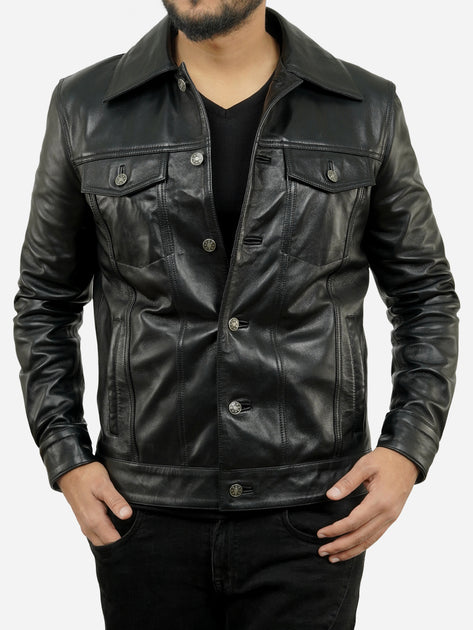
Trucker Leather Jacket
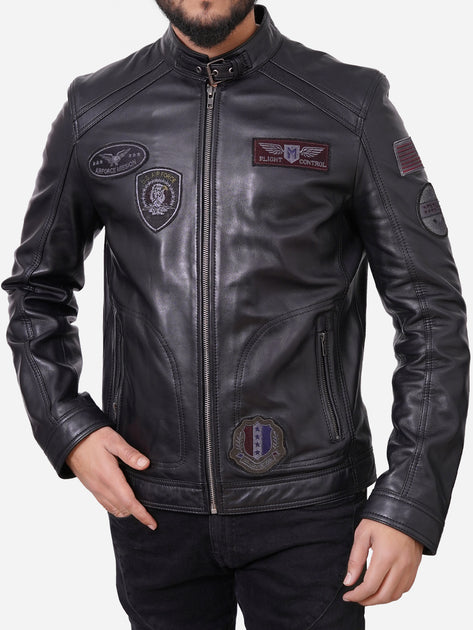
Chester Black Leather Jacket With Patches
